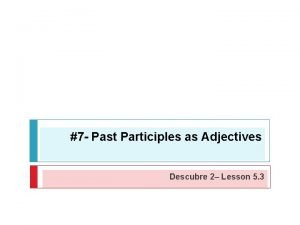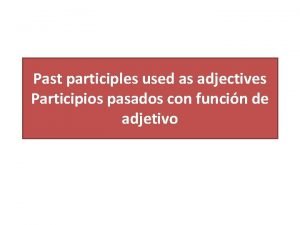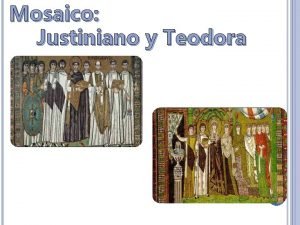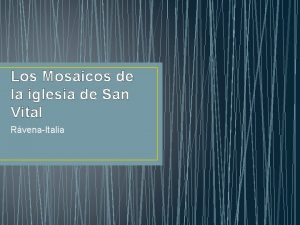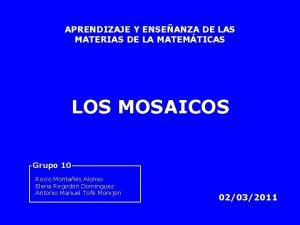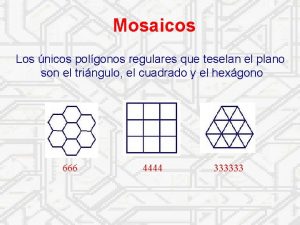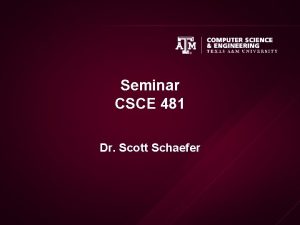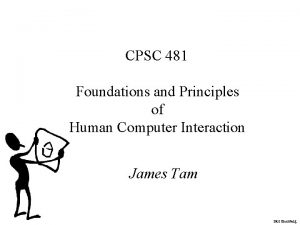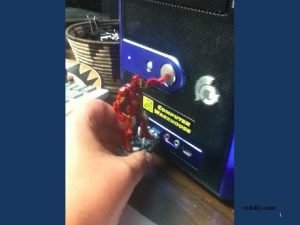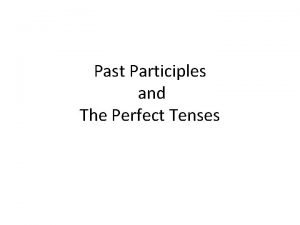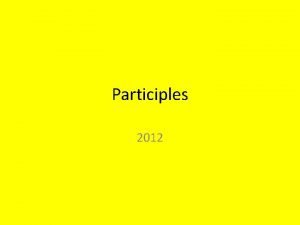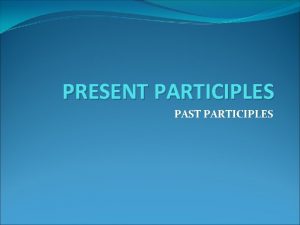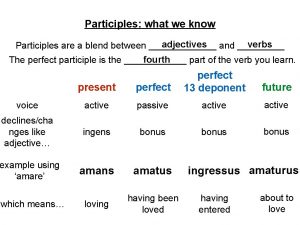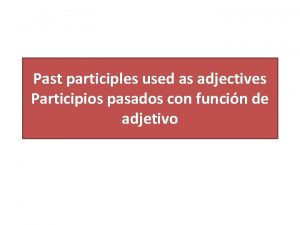Past participles used as adjectives Mosaicos p 481












- Slides: 12

Past participles used as adjectives Mosaicos, p. 481

English past participle The past participle of most English verbs are formed by adding –ed to the infinitive form of the verb: walk → walked close → closed talk → talked ● However, many English past participles are irregular: sing → sung write → written eat → eaten drink → drunk

Spanish past participle The past participle is formed in Spanish by adding –ado to the stem of – ar verbs and by adding –ido to the stem of –er, -ir verbs. (-ar) verbs cantar (to sing) Past participle (-er, -ir) verbs Past participle cantado bailar (to dance) bailado beber (to drink) bebido comprender comprendido (to understand) andar (to walk) andado vivir (to live) vivido saltar (to jump) saltado reír (to laugh) reído

Spanish irregular past participle The Spanish verbs also have irregular past participle: infinitive Past participle abierto morir (to die) muerto cubrir (to cover) cubierto poner (to put) puesto decir (to say, tell) dicho abrir (to open) descubrir (to discover) resolver (to resolve) descubierto romper (to roto visto break) escribir (to escrito ver (to see) hacer (to do) hecho volver (to come write) back) resuelto vuelto

Past participle used as an adjective In Spanish as in English, the past participle can be used as an adjective to modify a noun. The past participle as an adjective, must agree in number and gender with the noun that it modifies: Las puertas están cerradas Los ejercicios están hechos La ventana está rota La cama está hecha

ESTAR + Past participle The past participle in Spanish is normally used with the verb ESTAR to describe conditions that are the result of a previous action. Yo abrí la ventana. Ahora, la ventana está abierta. Yo hice mi tarea. Ahora, mi tarea está hecha. Yo pinté mis casas. Ahora mis casas están pintadas.

Práctica Complete the following sentences with the correct verb: Lucía está _______ en el sofá. A. dormido B. dormida C. hecho D. hecha

Práctica (cont. ) Complete the following sentences with the correct verb: Lucía está _______ en el sofá. A. dormido B. dormida C. hecho D. hecha

Práctica (cont. ) Complete the following sentences with the correct verb: Los estudiantes están _______ en las sillas. A. rotos B. rotas C. sentados D. sentatas

Práctica (cont. ) Complete the following sentences with the correct verb: Los estudiantes están _______ en las sillas. A. rotos B. rotas C. sentados D. sentatas

Práctica (cont. ) Complete the following sentences with the correct verb: Las matemáticas están _______ en la pizarra. A. escritos B. escritas C. bailados D. bailadas

¡Buen trabajo! Hoy hemos aprendido a usar los participios como adjetivos.
